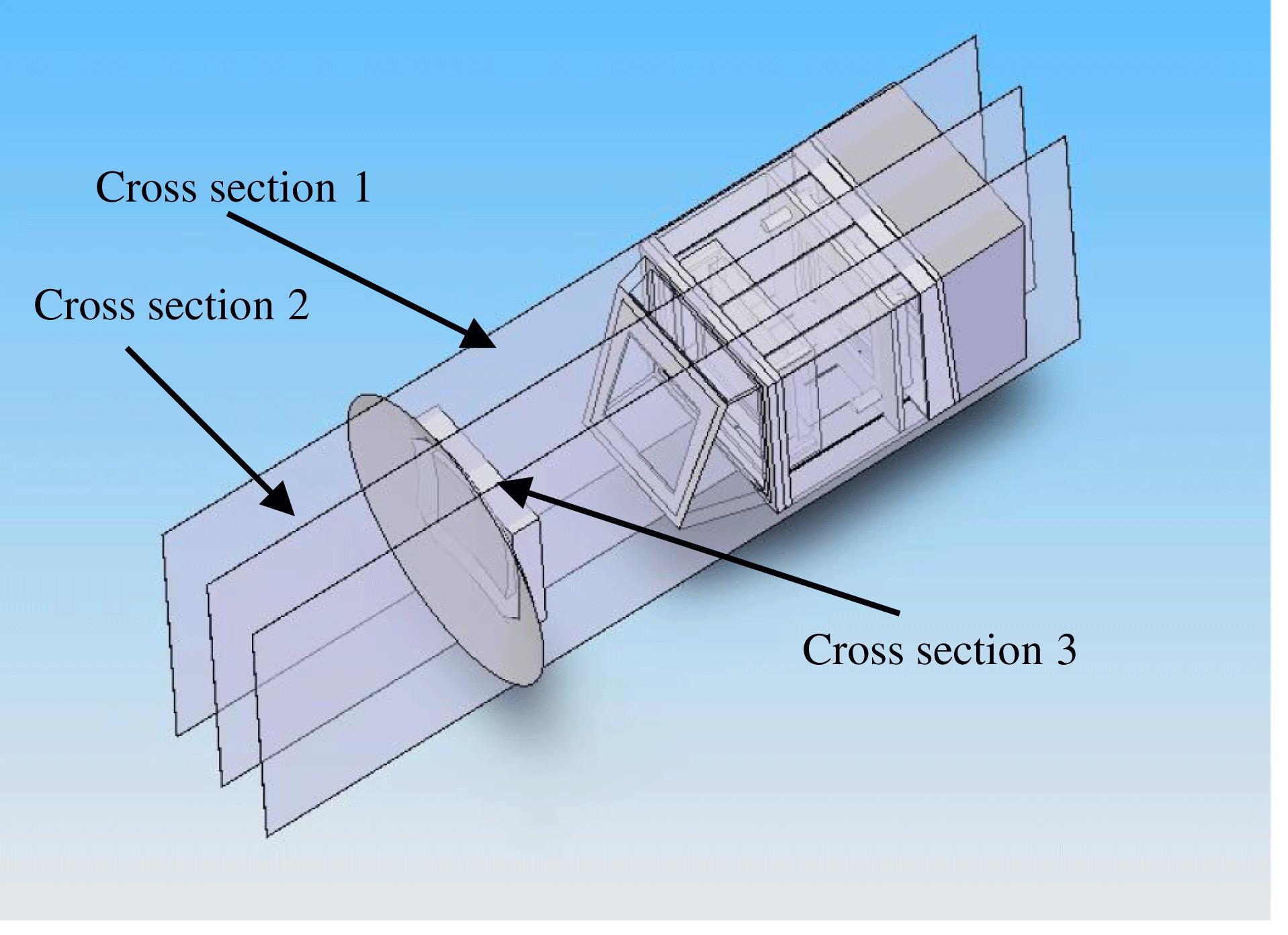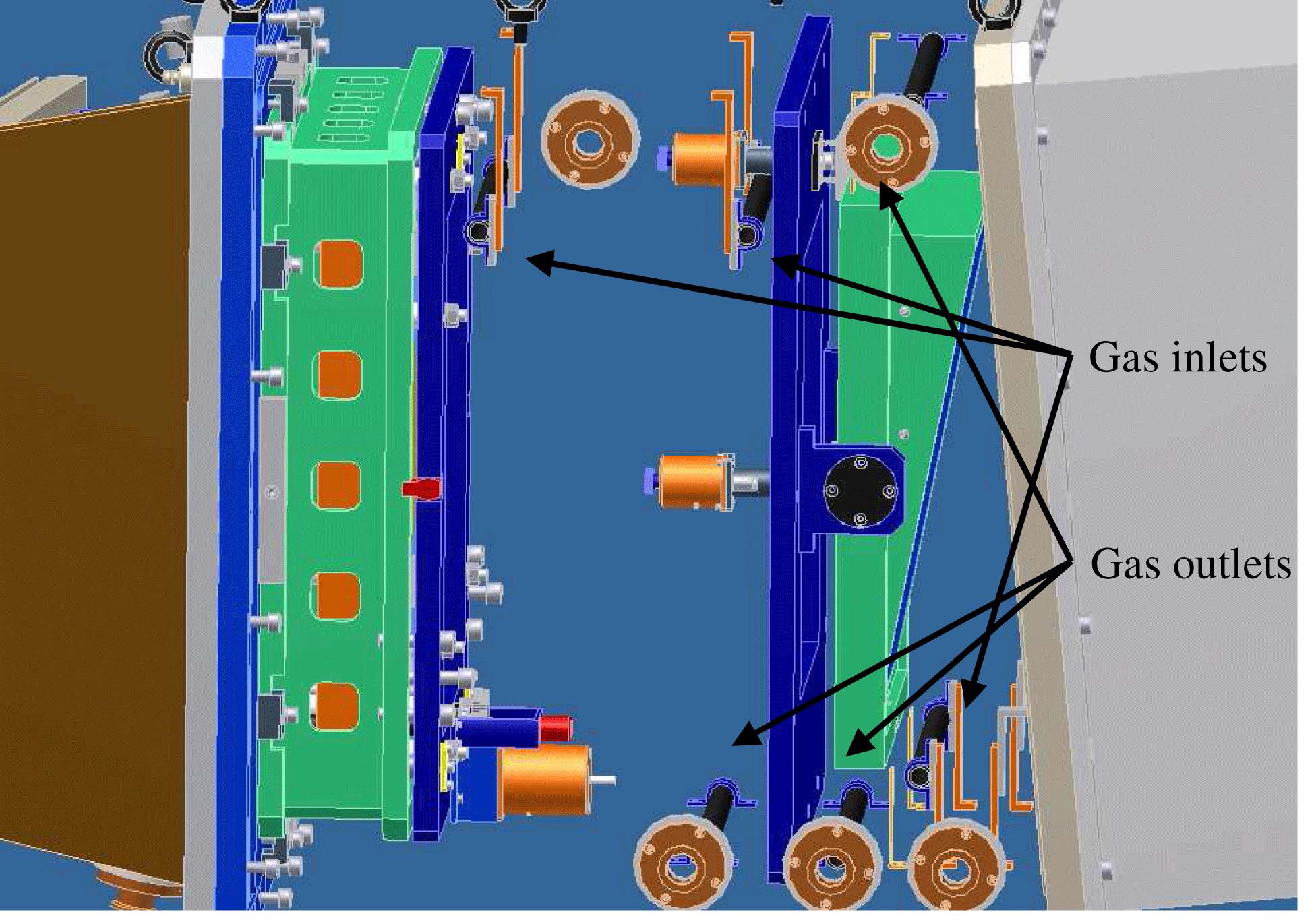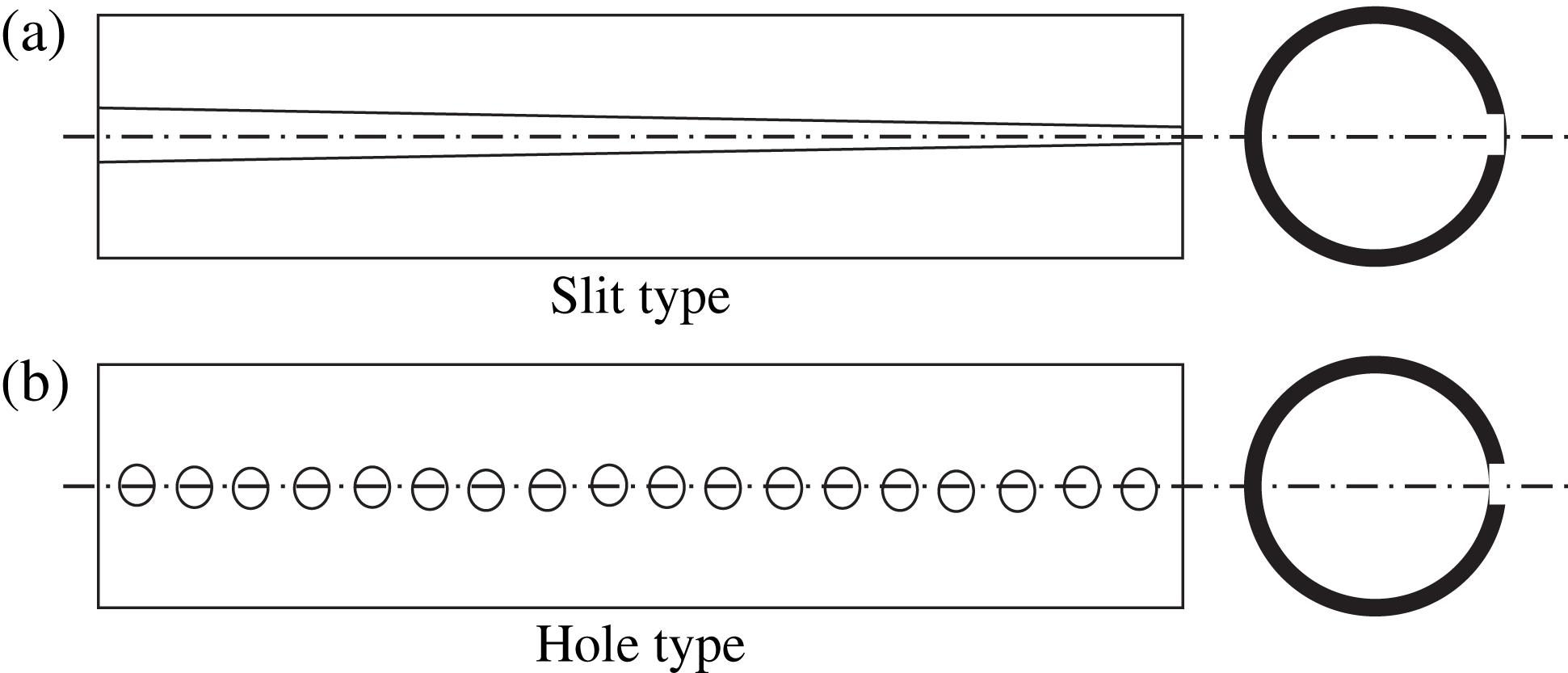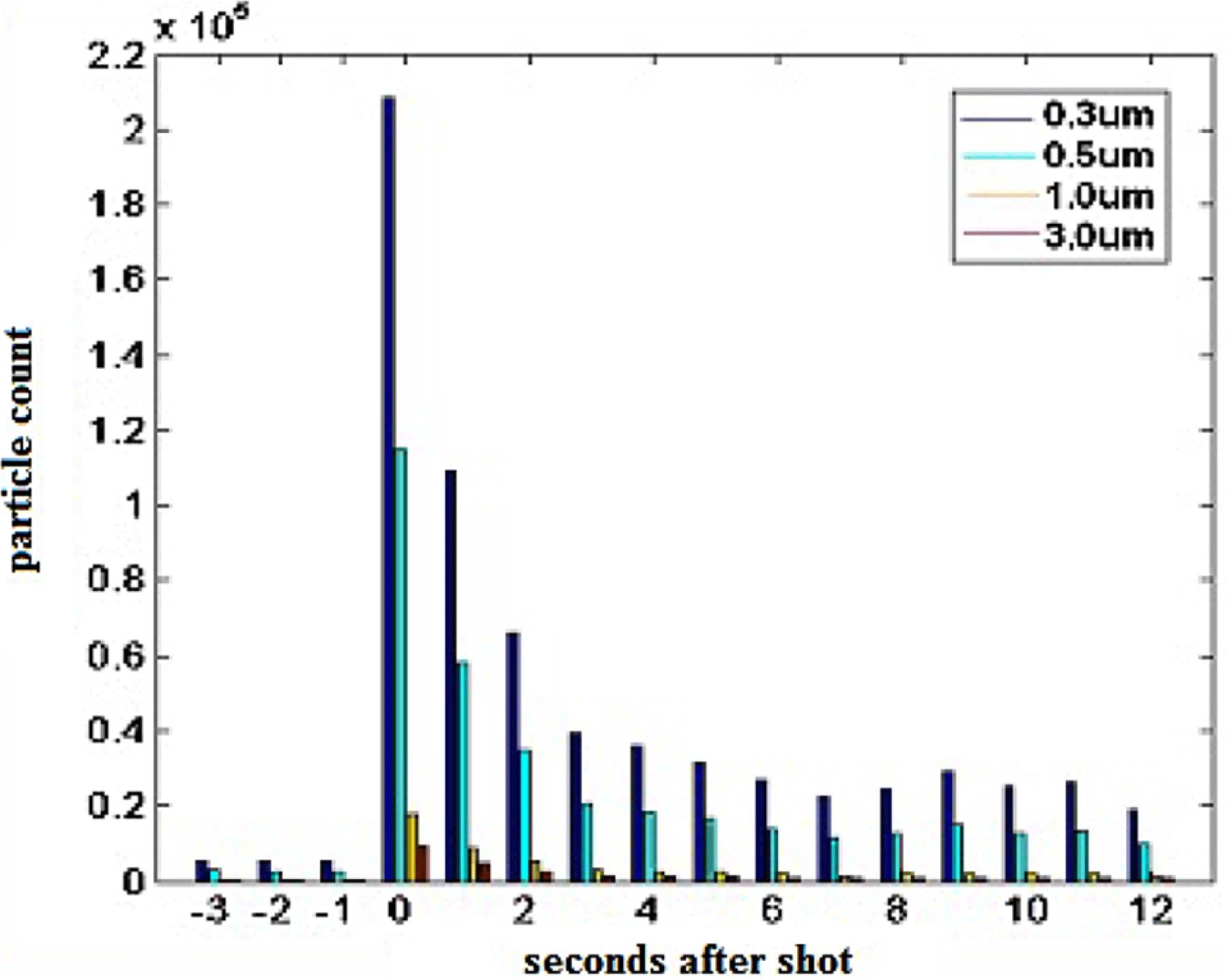SG-II-Up prototype final optics assembly: optical damage and clean-gas control  Download: 1041次
Download: 1041次
1. Introduction
The Shenguang-II Upgrade (SG-II Up) is a kilojoule-class solid-state laser and targeting facility under construction by the National Laboratory on High Power Lasers and Physics. The amplified 1053 nm beams from the Nd:glass driver are transported (at 40 kJ for 3 ns) in  quads with eight beams with aperture size
quads with eight beams with aperture size  to the 2.4 m-diameter target chamber where eight final optics assemblies (FOAs) convert each beam to the third harmonic, separate the residual 1053 and 527 nm beams, and finally focus the 351 nm beam onto the target.
to the 2.4 m-diameter target chamber where eight final optics assemblies (FOAs) convert each beam to the third harmonic, separate the residual 1053 and 527 nm beams, and finally focus the 351 nm beam onto the target.
The prototype design and manufacture of the FOA have been finished, and it is different from the NIF’FOA and the SG-II’FOA[1–6]. The FOA consists of fixed interfaces to the target chamber and five modules that house eight full-aperture optics, as shown in Figure  . The corresponding functions of the various optics, as shown in the aforementioned figure, are as follows.
. The corresponding functions of the various optics, as shown in the aforementioned figure, are as follows.
The frequency converter is a cascade sum-frequency generation design consisting of a 12.5 mm-thick Type-I KDP doubler and a 10.5 mm-thick Type-II KDP tripler, optimized to achieve  peak power conversion efficiency to the third harmonic at a
peak power conversion efficiency to the third harmonic at a  driver irradiance of
driver irradiance of  (Ref. [7]). The wedged plate, which is a prism with an edge angle of
(Ref. [7]). The wedged plate, which is a prism with an edge angle of  , combines with the focus lens to realize a 2 mm separating distance of the fundamental and second harmonic away from the third harmonic target. The focus lens has a 45 mm-thick meniscus-aspheric surface for avoiding optical damage induced by ghost images of the fourth order for
, combines with the focus lens to realize a 2 mm separating distance of the fundamental and second harmonic away from the third harmonic target. The focus lens has a 45 mm-thick meniscus-aspheric surface for avoiding optical damage induced by ghost images of the fourth order for  ,
,  , and
, and  . The BSG and MDS are made with 8 mm-thick fused silica possessing a 0.2% low-efficiency grating on the input surface for energy sampling. This setup provides transitions from the near-vacuum FOA environment to the hard-vacuum target chamber environment. The disposable debris shield is 2 mm-thick borosilicate glass. Here, the angle of the normal direction of the BSG and MDS to the DDS and the direction of the incident beam is
. The BSG and MDS are made with 8 mm-thick fused silica possessing a 0.2% low-efficiency grating on the input surface for energy sampling. This setup provides transitions from the near-vacuum FOA environment to the hard-vacuum target chamber environment. The disposable debris shield is 2 mm-thick borosilicate glass. Here, the angle of the normal direction of the BSG and MDS to the DDS and the direction of the incident beam is  , which is used to deviate ghosts below the fourth order for
, which is used to deviate ghosts below the fourth order for  ,
,  and
and  from the direction of the incident beam. Inside the prototype FOA, the pressure is 10 Torr with 10 SLPM before the laser shot and 50 Torr with 40 SLPM after the laser shot using clean dry nitrogen to purge.
from the direction of the incident beam. Inside the prototype FOA, the pressure is 10 Torr with 10 SLPM before the laser shot and 50 Torr with 40 SLPM after the laser shot using clean dry nitrogen to purge.

Fig. 1. The prototype FOA is composed of fixed interfaces to the target chamber and five modules that house eight full-aperture optics. The clear aperture size is  .
.
2. Clean-gas control
The optics in the prototype FOA are coated with a sol-gel anti-reflection film, but residuary (0.5%–1%) reflection also exists. Hence, these eight optics (including 16 surfaces) could form thousands of ghost images within the fourth-order reflection. If these ghost images are located on the optics, the optics would be directly damaged; if these ghost images move to other parts such as the mechanism, wire and silica gel (the paste around the optical elements, to guarantee the stability of the stress and deformation), the optics would be indirectly damaged because of the contaminants. As shown in the last section, the BSG, MDS and DDS are tilted by  , and most of the ghost images are deflected from the main beam path to protect the optics. These ghost images lead to another problem, i.e., the presence of contaminants. To avoid contaminant sputtering to the optics, the following procedures are performed. First, the mechanism surfaces are treated with anodic oxidation. Second, clean gas is used to blow the optics surface to eliminate contaminants. In this section, a numerical simulation is carried out based on the FOA construction and a blowpipe arrangement, and the experimental results are presented.
, and most of the ghost images are deflected from the main beam path to protect the optics. These ghost images lead to another problem, i.e., the presence of contaminants. To avoid contaminant sputtering to the optics, the following procedures are performed. First, the mechanism surfaces are treated with anodic oxidation. Second, clean gas is used to blow the optics surface to eliminate contaminants. In this section, a numerical simulation is carried out based on the FOA construction and a blowpipe arrangement, and the experimental results are presented.
2.1. Simulation analysis
The main physics process involved in the prototype FOA is the convection–diffusion process in the slit cavity (as indicated in Figure
 (1)
(1) (2)
(2) (3)
(3) is the velocity vector (
is the velocity vector ( ),
),  is time,
is time,  is the density of
is the density of  ,
,  is the kinematic viscosity of
is the kinematic viscosity of  ,
,  is the density of the aerosol in
is the density of the aerosol in  ,
,  is the pressure of
is the pressure of  ,
,  is the reference pressure, and
is the reference pressure, and  is the density in the reference point. Equation (
is the density in the reference point. Equation (The standard  model is used in the numerical simulation. This model is based on the hexahedron, and the gridding number is 2.9 million, as shown in Figure
model is used in the numerical simulation. This model is based on the hexahedron, and the gridding number is 2.9 million, as shown in Figure  and that all deformation rates are
and that all deformation rates are  . The deformation rate is defined as the ratio of the diameter of the excircle to that of the incircle. A larger deformation rate corresponds to higher grinding quality.
. The deformation rate is defined as the ratio of the diameter of the excircle to that of the incircle. A larger deformation rate corresponds to higher grinding quality.
Based on the above model, three cross-sections are analyzed, as shown in Figure  are simulated. Then, the ventilation efficiency on the optics surfaces and the density distribution of contaminants in the FOA are investigated for the above two fluxes. An entrance and an exit also exist in each cavity of the FOA.
are simulated. Then, the ventilation efficiency on the optics surfaces and the density distribution of contaminants in the FOA are investigated for the above two fluxes. An entrance and an exit also exist in each cavity of the FOA.

Fig. 4. Density distribution of the contaminants in cross-section 2 as the flux ranges within  after 30 s.
after 30 s.
The simulation results show that both 5 and  fluxes can maintain the relative density of the contaminants on the optics surfaces below 20% when the designed inlet pipe, exhaust pipe and spatial distribution are used. About 50 s after the laser launch, the contaminants decrease to 0.1% when
fluxes can maintain the relative density of the contaminants on the optics surfaces below 20% when the designed inlet pipe, exhaust pipe and spatial distribution are used. About 50 s after the laser launch, the contaminants decrease to 0.1% when  is used and 6% when
is used and 6% when  flux is used, as shown in Figure
flux is used, as shown in Figure  and a 180 s period.
and a 180 s period.
2.2. Gas-blowing scheme
In this section, the sizes, quantities and positions of the entrance and the exit as well as the gas-flow rate and hold time required for the contaminant elimination are given, based on numerical analysis of the gas-flow characteristics in the prototype FOA. Figure
The  used is 99.99% pure, and the
used is 99.99% pure, and the  content is less than 3 ppm. Gas is transported to the location where the aerosol needs to be blown by the inlet pipe. Figure
content is less than 3 ppm. Gas is transported to the location where the aerosol needs to be blown by the inlet pipe. Figure

Fig. 8. Surface damage morphologies induced by contaminants: (a) film damage located on the clear aperture brim, (b) surface spot outside the clear aperture, (c) clear aperture brim and (d) surface ‘mooning’ damage outside the clear aperture.
The configurations of the exhaust pipes are similar to those of the inlet pipes. To ensure uniform speed of the exhaust flow along the axial direction, the slit width is gradually increased from the point near the exit to the far end for the slit-type pipe. For the small hole type, the hole diameter is increased and the distance between the adjacent holes is gradually decreased from the point near the exit to the far end.
2.3. Experimental results
In the experiment, the flow controller is triggered at the same time as the laser fires. The flow flux is 40 SLPM. The particle counter is used to detect contamination. Figure

Fig. 9. Results obtained by x-ray fluorescence spectrometry: (a) unused silica coated by sol-gel film (including Al, Si, Pd, Cr, Mn, Fe, Cu and Zn) and (b) used silica coated by sol-gel film (including Zn, Al, Si, P, S, K, Ca, Ti, Cr, Mn, Fe, Ni and Cu; because the Pb amount is negligible, it is not labeled).
3. Optical damage
3.1. Damage morphology induced by the contaminants
Using an Msu25D high-resolution microscope, damage morphology is detected. Figure
The components and morphologies of the contaminants are different; thus, the damage morphologies are also different. The different figure subparts are explained as follows. Figure Figure Figure Figure
3.2. Component analysis of the contamination
Parameters such as the components of the laser-induced damage point, the irradiated point without damage and the un-irradiated point, as well as the mechanical material, wire, silica gel, unused silica and chemical films, are analyzed by energy-dispersive x-ray fluorescence spectrometry. Figure  .
.
4. Conclusions
The uniform distribution of hundred-micron-order punctiform damage in the clear aperture and the uniform distribution of ‘mooning’ damage or surface spots outside the clear aperture suggest that the contaminants induced by stray light because of the residual reflection from the mechanical metals, silica gel and wire are the main reasons for the damage increase. The gas flow used in the experiment eliminates certain contaminants, but ineffectively. Surface treatment of the metallic material is not completely effective for elimination of contaminants. Stray light absorbing traps are required in the prototype.
[1]
[2]
[3]
[4]
[5]
[6]
[7]
[8]
[9]
Article Outline
Dongfeng Zhao, Li Wan, Zunqi Lin, Pin Shao, Jianqiang Zhu. SG-II-Up prototype final optics assembly: optical damage and clean-gas control[J]. High Power Laser Science and Engineering, 2015, 3(1): 010000e7.










